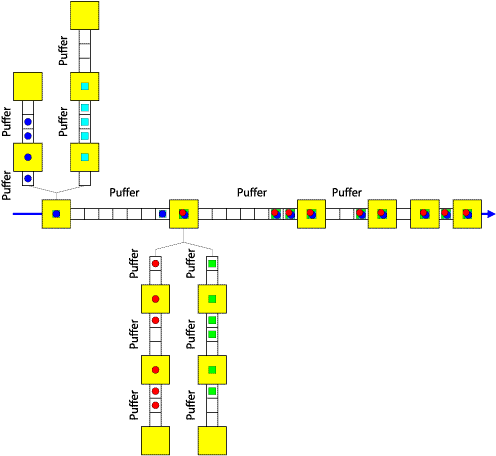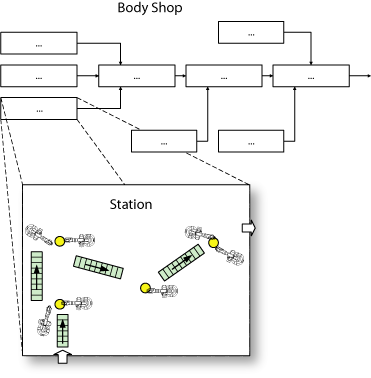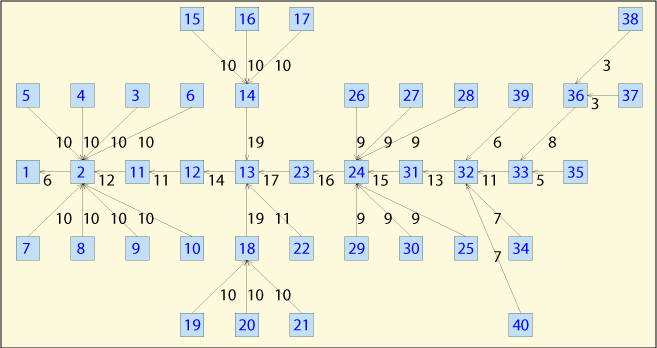
These are systems with deterministic processing times and machine breakdowns. With respect to the type of material flow, POM Flowline Optimizer supports two types of systems:
A "Flexible Transfer Line" comprises work stations with deterministic processing times. The stations are usually automated.

The processing times of the different work stations usually are different. However, the workstations may break down. Due to these breakdowns which introduce randomness into the material flow the stations usually are decoupled with the help of buffers. The breakdown behavior of each station is defined by its mean time to failure (MTTF) and its mean time to repair (MTTR), which can be used to define a station's technical availability.
POM Flowline Optimizer has also the ability to model converging material flows. In
this case work pieses are introduced into the system at different stations and move forward through subsegments of the system, until they are assembled into an aggregate workpiece which keeps on moving further.

In industrial practice, e.g. in a body shop of an automobile manufacturer,
such a systems usually exhibits a spine flow pattern with one main line with assembly stations and several supporting subsegments. The following figure shows the typical structure of a body shop.

The subsystems join at the assembly stations of the main line.
In contrast to linear systems with converging material flow complex interactions between the stations may occur.
The following figure shows a real-life body shop that has been analysed with POM Flowline Optimizer.

|



